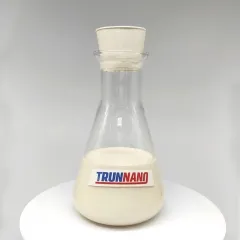Polycarboxylate Superplasticizers Revolutionize Concrete Innovation for Boosted Efficiency and Sustainability
The building market is frequently looking for materials that can boost the performance, toughness, and sustainability of structure projects. One such product that has been gaining considerable traction in recent years is polycarboxylate superplasticizers (PCEs). These advanced admixtures represent a leap onward in concrete technology, offering unmatched advantages that are transforming the means we come close to building and construction. By considerably improving the workability of concrete mixes while maintaining or even boosting their strength, PCEs have come to be crucial in contemporary building practices. The capacity to attain high fluidity without endangering on architectural integrity means that contractors can put intricate forms and designs easily, opening up new opportunities for designers and designers. Furthermore, making use of PCEs brings about reduced water demand, which not just boosts the longevity of the ended up product yet likewise adds to extra lasting building processes by minimizing waste and lowering the carbon impact associated with concrete manufacturing. As awareness expands concerning the environmental effect of typical building approaches, the fostering of polycarboxylate superplasticizers is viewed as a critical action in the direction of greener structure methods. Suppliers are constantly innovating to create formulas that provide much better performance and compatibility with numerous sorts of cement and aggregates, making sure that this technology stays at the reducing edge of concrete chemistry. With the raising stress on sectors to adopt environmentally friendly services, the role of PCEs in attaining these goals can not be overemphasized. They play a critical component in allowing the building and construction market to meet rigid policies and contribute positively to worldwide efforts aimed at combating climate change.
(Polycarboxylate Superplasticizer)
Polycarboxylate superplasticizers work by distributing fragments within the concrete mix, successfully reducing the quantity of water needed to accomplish the wanted consistency. This diffusion result is because of the lengthy molecular chains of PCEs that attach themselves to cement fragments, producing a steric barrier that avoids bit aggregation. Because of this, less water is required to lubricate the blend, causing a lower water-to-cement ratio. A lower water-to-cement ratio is straight correlated with higher toughness and enhanced sturdiness of the hard concrete. Additionally, PCEs allow for the development of self-compacting concretes, which require no vibration throughout placement, thus saving time and labor prices. The convenience of polycarboxylate superplasticizers extends past just water decrease; they can also enhance early-age residential or commercial properties of concrete, speeding up establishing times and enhancing early strengths. This fast development of strength is particularly valuable in fast-track construction projects where quick turnaround times are essential. In addition, the ability of PCEs to spread great fragments successfully causes a denser matrix, which in turn improves resistance to chloride ion infiltration and sulfate attack, two significant root causes of concrete degeneration. The improved durability imparted by PCEs translates into longer-lasting structures that need much less maintenance over their life-span, ultimately supplying better value to owners and drivers. In an age where sustainability is paramount, the contribution of polycarboxylate superplasticizers to resource-efficient building can not be neglected. By maximizing making use of resources and minimizing the general quantity of concrete required, PCEs aid minimize environmental effects related to extraction and handling. The recurring research study right into this field intends to additional improve the performance of PCEs, checking out methods such as customizing molecular structures to specific applications and developing bio-based choices that line up with circular economy principles.
The prevalent fostering of polycarboxylate superplasticizers is driving changes in construction techniques and layout ideologies across the globe. Engineers and designers currently have greater versatility in creating structures that were previously constricted by the restrictions of traditional concrete blends. The premium flowability supplied by PCEs allows for the realization of complex building functions and ingenious engineering services, pressing the limits of what is possible in construction. Past appearances, the impact of PCEs on architectural performance guarantees that structures remain safe and resistant versus environmental tensions and natural catastrophes. In regions vulnerable to quakes, for instance, the boosted ductility of concrete changed with PCEs can mean the distinction between tragic failure and survivable damages. The integration of polycarboxylate superplasticizers right into building practices likewise facilitates the transition to more lasting growth versions. By promoting using additional cementitious products like fly ash and slag, PCEs sustain the recycling of industrial by-products, thus lowering dependence on virgin resources. In addition, the capacity for reducing the symbolized power and exhausts of concrete with maximized solutions highlights the significance of PCEs in conference ecological targets. Looking in advance, the future of polycarboxylate superplasticizers shows up encouraging, with continual innovations anticipated to increase their application range and effectiveness. Cooperation between academia, industry, and regulative bodies will be type in conquering challenges and unlocking the complete capacity of this transformative technology. In conclusion, polycarboxylate superplasticizers stick out as a cornerstone of contemporary concrete modern technology, symbolizing the concepts of development, performance, and sustainability that define the future of construction.
TRUNNANO is a supplier of nano materials with over 12 years experience in nano-building energy conservation and nanotechnology development. It accepts payment via Credit Card, T/T, West Union and Paypal. Trunnano will ship the goods to customers overseas through FedEx, DHL, by air, or by sea. If you want to know more about Polycarboxylate Superplasticizer, please feel free to contact us and send an inquiry.(sales5@nanotrun.com)
All articles and pictures are from the Internet. If there are any copyright issues, please contact us in time to delete.
Inquiry us

